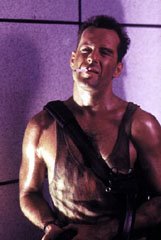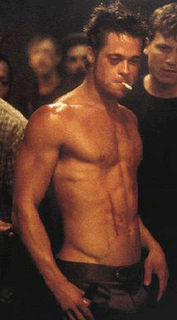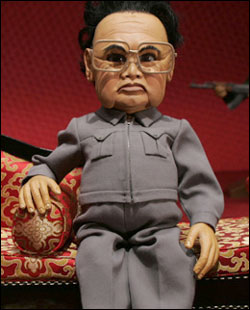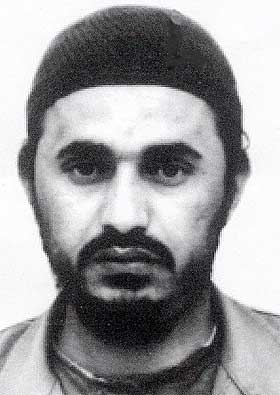Dimensions of Drug Control
Drug control policy is often directed by its political dimension. Since governments aim to stay in power by keeping their mandate, appealing to public concerns about drugs is a seemingly logical move. However, the public may not be informed about drugs, their effects and their correlation to crime. As such, if public opinion is based on prejudices and bad information, such prejudice and misinformation gets codified into drug control policy.
By the same token, the symbolic dimensions of drug control policy and its related effects need to be taken into account. What a given drug control policy or program symbolises in the collective mind of the public is an important consideration. After all, if there is not public support - or worse, if there is public disapproval - the actual effectiveness of an approach to drug control is void. This essay aims, then, to investigate and discuss the extent to which the political and symbolic components of approaches to drug control policy and programs have an effect and how these might be manipulated to the ends of different parties. Some modest suggestions are made for how drug control policies with a harm minimization approach might be able to use the political and symbolic dimensions in different ways to appeal to the public in getting groundswells of support for more radical programs.
As Keenan (2004: 74) notes, people's understandings and beliefs about drug use are socially constructed. As such, they are subject to change as the years go by and society shifts. The public relays information to the powerful and the powerful try and reflect this in their decisions. Indeed, it might be compared to a feedback loop between the political, policy-making/program-directing bodies and the public; its 'customers', if you will. Somewhere along the way, however, advantage can be taken of this precarious interaction by appealing to populist prejudices and fears. It is in this space, then, that this discussion is concerned: the political and symbolic dimensions of policy and practice regarding drug control.
Attitudes towards drugs, and thus the policies that control them, have always been subject to the social and political mores of the day. Drug usage as an issue of public merit and salience did not come about until the late 1960s, when usage - and importantly, public awareness of usage - increased (Brereton, 2000: 91). Historically, then, approaches to the issue of drugs in society has always been subject to the winds of social and political change. This makes sense, of course, since politicians are supposed to respond to their mandate and reflect the values of their constituencies, but as Rouse and Johnson (1991: 210) note, "policymakers and citizens must become aware of how their personal moral standards affect political life and policy choices". Discussions about the political and symbolic implications of such policy should at the very least inspire some sort of reflexivity in the key stakeholders and players in the drug control arena.
There is evidence to suggest that drug control policy has little or no actual effect on drug use and related behaviours. In a study that compared Amsterdam, having a de facto decriminalization approach, with San Francisco, which has a punishment-based prohibitive model, it was found that despite differing drug policies both cities had remarkably similar rates of drug usage duration and cessation (Reinarman et al, 2004: 840). It was concluded that "if drug policies are a potent influence on user behaviour, there should not be such strong similarities across such different drug control regimes" (ibid: 840-841).
Rather than formal drug policies having an effect, Reinarman et al suggest that what is more likely to affect drug behaviours are informal social controls. That is, usage is structured according to 'subcultural etiquette', rather than to laws and policies (ibid: 841). If this is the case and formal drug policy's actual effects are in fact somewhat negligible, the question must be asked: what role does drug policy have at the political and symbolic level? After all, if drug policy is irrelevant, its total function might be in the realm of the political and symbolic.
Drug trafficking is an illegitimate market. As such, eradicating these avenues of trade is important to legitimate the economic order. Symbolically, the free-enterprise capitalist system can be seen as being undermined by the very presence of the drug trade. Thus, while border control and other means of combating the illegal drug trade may never actually completely dispose of these markets, it is important at the political level that a government is seen to be doing something, so that faith may be restored in the legitimate economic order: legitimacy must be protected.
It is perhaps for these reasons that recent international incidents involving Australians and the drug trade have been the focus of so much media saturation. That these stories get covered and splashed across the front pages is, at the subtextual level, a message to Australians that drugs are bad, and that getting involved with them can only end one way: death, either by abuse or by capital punishment. In order to legitimise the idea that Australia must be perceived as 'tough on drugs’, the Australian government's official response to cases such as Shapelle Corby, Van Nguyen and the Bali Nine has been reflective of its approach to the drug control issue.
The symbolic and political dimensions are related to the extent that agents of the political can influence public perception, and thus the symbolic element. For example, an influential politician spouting rhetoric about her opponents being 'soft on drugs' and being ineffectual as leaders in drug policy has the potential to affect the perceptions of that politician or party in general approach. Thus, it can be seen as important to make sure a message that will appeal to the public - the voters - is espoused. This, however, does not mean changing a policy to suit public opinion. To the contrary, all it may mean is clever marketing campaigns which reframe the situation and redefine what it means to in fact be 'soft' or 'tough' on drugs and crime.
Such tactics will have to be modified from one community to the next as contextual and demographical differences come to the fore. As Graycar et al note in relation to prohibitionist measures, "the tactics must fit the community, the location and the market; there is no one approach which suits all" (1999: 6). The very fact of these differing approaches can be seen to highlight the vastly constructed nature of drug control policy: after all, is it not the case that presentation (note: not necessarily content) of policy to be in tune with the mores and attitudes of a community is very much like that other typically amoral enterprise, advertising and marketing?
One of the arguments being presented here is that whatever the accuracy of relevant facts, certain information being presented (and the inverse, certain other information not being presented) carries with it political implications. For example, the US State Department cites cannabis production and consumption as a 'serious problem', noting that today's marijuana is "not the 'pot' of the 70s" (US Department of State, 2005: 5). Whether or not this is true, stating that the chemical compounds that make cannabis effective are now much stronger and, indeed, more dangerous and addictive (ibid), works in a political sense to attempt to sway those who might belong to a generation that did view cannabis as relatively harmless.
It can be suggested at this point that the aims of drug control policy-makers and program directors who would like to see a harm-minimisation angle in approaches to these issues should thus not be concerned with changing their methods per se, but with changing the presentation and application of such methods. Using marketing and public education tools to cultivate a gradual but sure sea change in attitudes and perceptions of various drug control approaches is one approach. However, it should be noted that since there is no academic consensus on what a 'better' policy or program is - and indeed the drug control issue is a polarising one - these methods could be seen as a covert and somewhat dishonest application of political and symbolic resources.
The political and symbolic dimensions of drug control policy can be manipulated in various ways, to differing ends. In this sense, individuals and bodies can promote their various drug control policy and program strategies using methods used in marketing, advertising, public relations and so on. A drug control policy or program's actual effectiveness in terms of its stated aims may be irrelevant if the program appears like it is being somehow soft or easy on drug users. One example of this is the continued opposition to needle-syringe exchange programs despite most evidence supporting the contention that they reduce "HIV transmission and risk behaviours and do not lead to increased drug use" (Villarreal and Fogg, 2006: 59). Thus, it must be asked: do the actual quantitative effects of drug control policy matter if the general public feels satisfied? And, alternately, if drug control policies are effective but politically/symbolically unattractive, might they be disregarded or abandoned?
Indeed, public perception may be entirely out of synch with the facts of the matter. Evidence from Portugal, where drugs are effectively decriminalised, suggests that under a non-prohibitive drug control regime, drug use is infrequent and of low intensity (Cohen, 1998: 4). This approach, however, may not garner public support in many countries, especially the United States.
Additionally, programs that have public support, for whatever reason, may in fact be counterproductive. For example, the Life Education drug education program run in primary schools - which purported to delay the onset on drug experimentation- in fact did not work in this regard (Hawthorne et al, 1995: 214). Indeed, Life Education evaluations found the program actually produced rather than reduced drug use in children (Wallace and Stagier, 1998: 169). However, despite such ineffectual approaches to the drug issue, the Life Education program was seen as a positive force, since it demonstrated that someone was doing something about the supposed drug 'problem'. Indeed, Life Education's legacy is that it was a "visible symbol that communities are prepared to tackle the drug issue through education" (Hawthorne et al, 1995: 214).
A similar example can be found in the Drug Abuse Resistance Education (DARE) program, which aimed to equip young people with the skills to say 'no' to drugs. There is limited evidence that DARE in fact made 'significant impacts on drug usage in the desired direction' (Wallace and Stagier, 1998: 169). However, the important point is that the DARE program has "high client satisfaction" (ibid: 168), meaning that the program connected with people and was symbolically resonant.
For these reasons, one suggestion that might combat misperceptions and misunderstandings about drugs and drug control is some kind of public education campaign about the apparent dangers of programs such as these.
However, it might be counter-argued that such education campaigns have already been undertaken and that these campaigns themselves are purveyors of misinformation. Indeed, as has been shown via this very Life Education/DARE programs example, some types of education may not yield the intended results, whatever they might be.
Nevertheless, there is something to be said for education of drug users themselves. For example, it has been found that as information about the risks of HIV becomes better known, in conjunction with encouragement and access to means of changing behaviour, risk behaviours amongst drug users declines (Wodak, 2005: 198). Educating drug users in terms of harm minimisation has the potential to yield some positive results for all of society.
Politically, debate about the benefits of harm minimisation approaches - rather than prohibitive and suppressive techniques and policies- is often absent from the conversation. Viewing official policy documents of a prohibitive approach to drug control, minimising harm seems to be an afterthought, if present at all. For example, while acknowledging that relapses are very common, the focus will still be on abstinence rather than a 'safe' level of drug use (Gowing etc al, 2001: 19).
Also absent from much debate around drug control are the hidden or censored narratives about why people take drugs. While much may be made of people either being constrained to take drugs because of external factors or self-control problems influencing risk-taking behaviour, little is said either academically or in the public sphere about drug use as it relates to a rational choice about 'feeling good'. What O'Malley and Mugford stated fifteen years ago still seems to hold: the "pleasure discourse remains underdeveloped" (1991: 51). What such discourses of 'pleasure' from drug use might conjure in the public sphere, symbolically, might be so controversial that the discussion would become bogged down in rhetoric.
It is not just the public's perception that is important in considerations of the political and symbolic dimensions of drug policy. Researchers and experts need to be able to sell programs and ideas to those who have the power to implement them. Thus, programs need to be presented in such a way that will appeal to politicians and policy makers. Certain decriminalization approaches could actually be sold to policy people on the basis that it is in fact much 'tougher' than simply throwing offenders in gaol. For example, the Portuguese approach to decriminalization sees drug users as victims and thus also aims to promote abstinence (Allen et al, 2004: 1). Thus, care needs to be taken in making typologies about what one approach signifies politically. That is, decriminalisation isn't necessarily always about a liberal approach.
The situation in Portugal arose more out of pragmatic concern that the prohibitive approach was not working and a new way was needed to combat the drug scourge and the crime related to it.
The relationship between drugs and crime is a hotly contested one. In a study of police detainees, thirty seven percent of those interviewed attributed at least some of their offending behaviour to illicit drugs (Schulte et al, 2005: 3). Similarly, a study of incarcerated male offenders found that more than half attributed their behaviour to drugs and alcohol (Makkai and Payne, 2003: xvi). However, it is important to take a critical look at statistics such as this. After all, it is in the best interests of incarcerated people or those detained by police to be trying to mitigate responsibility for their offences. It only makes sense that some would exaggerate the extent to which they were or were not in control of themselves in a given situation. Additionally, co-operating with researchers may similarly have positive consequences for participants.
It may be politically advantageous for some powerful bodies to represent drug use in a light that emphasizes its connection to crime. Since many of the same bodies are in competition with each other, bidding for the same funding dollars, organisations will want to try to make their concerns seem more important. Whatever the actual correlation between drug use and crime, emphasizing that they are related is good for police in a political sense. It legitimates their actions in eradicating the drug trade and being hard on drug users. Indeed, police organizations themselves conflate crime with the drug issue because "criminal enterprises are intertwined" and "targeting drugs means hardening the approach to all crimes in general" (Nicholas, 2004: 9). This works to politically enhance the police's work.
Related to this local example of conflating drugs with all crime is the similar approach in the international context to link the drug trade with other transnational offences. For example, the United States Department of State has officially stated that the trafficking of illicit drugs is 'inextricably linked' with organized crime and terrorist organizations (U.S. Department of State, 2005: 1). Politically, making this connection between one type of deviance and others again legitimates any actions against drugs by having them 'really' being about terrorism. In this way, targeting the local drug dealer is seen as aiding in the fight for international terrorism.
Perhaps ironic in light of the 'tough on drugs' approaches to drug control as it relates to general crime control, which would include more punitive measures such as increased incarceration for drug offenders, is that much of the harm associated with illicit drug use is linked to such usage while incarcerated (Wodak, 2005: 197). This potentially sets up the proverbial vicious cycle where drugs are taken in prison then sought once prisoners are released, leading to drug offences, which throws them back into the prison system.
However, one should not be completely cynical about the nexus between drug-related crime and other, more 'serious' crimes. In Australia's past, certainly, there has been organized crime involvement with drugs. Indeed, it was the murder of anti-cannabis activist David Mackay in 1977 that has been said to have brought the drug issue into focus in the eye of the general public (Brereton, 2000: 92).
If one reason that drug use is proscribed against is because of its relationship to crime, another reason is that it is simply seen as inherently morally wrong. This line is taken up by James Q. Wilson, who believes that a cultural change needs to take place such that the 'moral climate' of society shifts to find drug use completely 'loathsome' (Wilson, 1990: 541). This view is based on the idea that a society that uses drugs is complacent and ineffective, eroding the good work done by our forebears. It is from ideological positions such as this that the public demonization of drug use (by politicians, popular media and families themselves) is encouraged. Indeed, "public officials can and should decry drug use and make clear the moral, as well as the practical, grounds for [drug use] being wrong" (ibid: 543).
It is interesting that prohibitive means of drug control have been viewed as 'tough' while decriminalization and/or harm minimisation approaches have been seen as 'soft' or at least as depicted as such. Despite Portugal having a public health/decriminalization approach to drug control, this does not necessarily imply it is a 'soft' approach. For example, although Portugal uses administrative penalties for drug offences rather than prohibitive punishments, such administrative penalties can be much harsher than the alternatives. Indeed, "decriminalisation can not always be seen as a less punitive approach to drug use"(Allen et al, 2004: 3).
One symbolic consideration in the marketing of harm minimisation-type programs is the perception of such approaches are 'weak' or 'soft', compared to the masculine imagery of being 'tough' on drugs and crime. When discussing the political dimension, it may then also be worth bringing up sexual politics. The brute force of a zero tolerance approach carries with it the notions of masculinity and combat: a 'war' on drugs and crime. It might even be suggested that continued public support for zero-tolerance crime control approaches despite dubious effectiveness, especially in the United States, is linked to this perception of it as masculine. Indeed, the US has continually shunned harm-reduction measures in favour of zero-tolerance, despite apparently "incontrovertible evidence" of the former's effectiveness (Wodak, 2005: 200). This is attributable in part to the marketing of such measures as being 'tough'.
Such marketing does not only apply to illicit drug control but also to how drugs - both licit and illicit - are represented in the media. For example, depictions and perceptions of beer as a 'masculine' beverage. Also, depending on who is doing the representing, marijuana as a harmless recreational drug or, more prominently in most popular media, as a zombie-creating drug for losers. An interesting example is that of the illicit inhalants used in chroming practices which are not in fact illegal. Calls for inhalants to be made illegal have to do with wanting a symbolic point made about the acceptability of drug use. Opposition to this is from a moral standpoint, not a legal one; though making it formally illegal would make legitimate the moralistic view.
As has been shown, the efficacy of any information presented by policy or program bodies about drug use and control is not necessarily related to its truth-value. In a recent paper, Moore and Fraser 2006: 3045) note that on the one hand, harm minimization approaches assume a neo-liberal or rational-actor model of behaviour that may not actually apply to drug users, since there are constraints on drug users that may render them unable to make informed choices. However, using this lens of seeing drug users as decision-making neo-liberals actually affords them some of the respect associated with such rationality (ibid). Thus, despite there being a degree of contestation around whether drug users are constrained by drugs/economics/genetics etc. or in fact make rational choices about drug behaviour, one political function of the rational-actor model is to afford drug users a degree of agency.
This brings up a point about how drug use can be constructed as being a rational choice on the one hand, and being an addictive, victim-creating behaviour on the other. The idea of drug users becoming addicted and thus needing some sort of treatment comes from an ideological standpoint that favours painting drug users as victims of their own lack of self-control or inherent predisposition to over-consumption and so on. Stanton Peele takes a rather extreme view of drug 'treatments' and the concept of 'addiction' especially. Importantly, he conceives of addiction not as a physical, scientific category of dependence on drugs, but rather something that is "better understood as a cultural phenomenon that fulfills functional and symbolic needs" (Peele, 1990: 2). For Peele, drug use has "always been morally tinged" just as all scientific theorising about such things has been "heavily influenced by politics and social conceptions" (ibid: 8). However, as the discussion undertaken here should demonstrate, cultural constructions are not necessarily any less 'real' than a scientific conception. The ways they can affect and change society and its outlook should not be underestimated.
Just like a celebrity might donate to charity in order to appear globally aware and concerned, so too can good things be done about drug control policy when the aims themselves are based in issues of public perception. The challenge may be to strike a balance between appealing to extant public concerns while at the same time forging ahead with programs that might educate the public about these issues. Of course, there is not necessarily only one political or symbolic subtext or function to a given approach to drug control. Indeed, much of what these dimensions of drug policy infer to an individual will be to some extent based around individual factors of family background, upbringing, education and so on. Further studies into this area should take careful notice of this.
It should also be noted that when speaking of the political and symbolic dimensions of drug control policy and the like, it is not necessarily conscious decisions or scheming policy makers that make these dimensions relevant. Indeed, much of it comes from a cultural unconscious or at least from embedded attitudes and notions of 'right' and 'wrong'.
A deeper understanding of how political and symbolic forces shape public attitudes, perceptions and sympathies regarding drug use might equip those in the political/public policy and/or drug treatment areas with tools to off-set potential negative effects of their well-intended actions. Even simply having a certain reflexivity in approaches to drug control might lead to smarter decisions in presentation and application of drug control, especially with regard to what information becomes widely publicly known and what is kept more covert. After all, there may be some effective programs that can be argued are 'good' for society in the harm-minimisation and civil liberties senses, but do not find favour in the public-relations arena.
By way of a conclusion, the one suggestion that can be made here based on the discussion undertaken is that considerations of the political and symbolic dimensions be taken into account by policy makers, program directors and even drug users themselves. Despite living in a society supposedly dedicated to the pursuit of facts and the scientific method, considerations of the more social elements of drug control policy have a part to play.
Daniel Hedger
189 245
References
Allen, L, Trace, M and Klein, A (2004),"Decriminalisation of drugs in Portugal: a current overview" A DrugScope briefing paper for the Beckley Foundation Drug Policy Programme, no. 6.
http://www.internationaldrugpolicy.net/reports/BeckleyFoundation_BriefingPaper_06.pdf
Brereton, D. (2000) The History and Politics of Prohibition, in G.Stokes, P. Chalk and K. Gillen (eds) Drugs and Democracy: In Search of New Directions, Carlton South, Victoria: University of Melbourne Press
Cohen, P. (1998) Shifting the main purposes of drug control: from suppression to regulation of use. Reduction of risks as the new focus for drug policy, a paper presented at the Euro-Ibero-American Seminar, Porto, Portugal, October 1998.
Gowing, L. Proudfoot, H., Henry-Edwards, S. and Teesson, M. (2001) Evidence supporting treatment: the effectiveness of interventions for illicit drug use, Canberra: Australia National Council on Drugs.
Graycar, A., Nelson, D. and Palmer, M. (1999) "Trends & Issues in Crime and Criminal Justice. No. 110: Law enforcement and illicit drug control". Canberra: Australian Institute of Criminology. http://www.aic.gov.au/publications/tandi/tandi110.html
Hawthorne, G., Garrad, J. and Dunt, D. (1995) Does Life Education's Drug Education Programme Have A Public Health Benefit? Addiction, 90: 205-215
Keenan, M. (2004) The Social Context of Drug Use. In M. Hamilton, A. Kellehear and G. Rumbold (eds) (2nd ed) Drug Use in Australia: A Harm Minimisation Approach, Melbourne: Oxford University Press.
Makkai, T. and Payne, J. (2003) "Research and Public Policy Series No. 52: Drugs and crime : a study of incarcerated male offenders" Canberra: Australian Institute of Criminology. http://www.aic.gov.au/publications/rpp/52/
Moore. D. and Fraser, S. (2006). "Putting at risk what we know: Reflecting on the drug-using subject in harm reduction and its political implications"Social Science & Medicine, Vol. 62, No.12 June.
Nicholas, R. (2004) "The Impact of General Law Enforcement on the Illicit Drug Market". Presented at the 3rd Australiasian Drug Strategy Conference, 2004.
O'Malley, P. and Mugford, S. (1991) The Demand for Intoxicating Commodities: Implications for the "War on Drugs", Social Justice, 18:49-75
Peele, S. (1990) "Addiction as a Cultural Concept", Annals of the New York Academy of Sciences, 602: 205-220. http://www.peele.net/lib/cultconc.html
Reinarman, C. Cohen, P. and Kaal, H. (2004). "The Limited Relevance of Drug Policy: Cannabis in Amsterdam and in San Francisco" American Journal of Public Health, May 2004; 94: 836 - 842.
Rouse, J. and Johnson, B. (1991) Hidden Paradigms of Morality in Debates About Drugs: Historical and Policy Shifts in British and American Drug Policies, in J. Inciardi (ed.). The Drug Legalization Debate California.: Sage.
Schulte, C., Mouzos, J and Makkai, T. (2005) "Research and public policy series No. 65: Drug Use Monitoring in Australia : 2004 annual report on drug use among police detainees". Canberra: Australian Institute of Criminology
http://www.aic.gov.au/publications/rpp/65/index.html
U.S. Department of State (2005) International Narcotics Control Strategy Report, Policy and Program Developments
http://www.state.gov/g/inl/rls/nrcrpt/2005/vol1/html/42360.htm
Villarreal, H., and Fogg, C. (2006). "Syringe-Exchange Programs and HIV Prevention: If they're effective, what's the controversy?" American Journal of Nursing. 106(5):58-63, May 2006.
Wallace, S. and Stagier, P. (1998) "Informing Consent: Should 'providers' inform 'purchasers' about the risks of drug education?" Health Promotion International, 13, 167-171
Wodak, A. (2005) "Drugs, Crime and Crime Reduction" in D. Chappell and P.Wilson (eds) Issues in Australian Crime and Criminal Justice Chatswood, NSW: LexisNexis: Butterworths (197-219)









